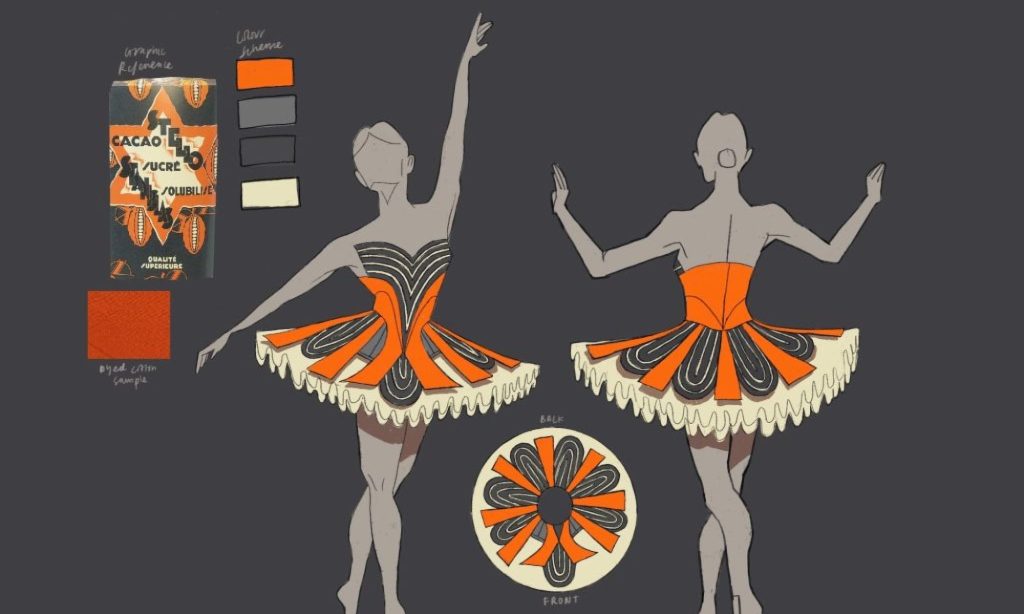I began the fourth week of the tutu project by tampering with the shape of the bodice again. Coming back to it after the weekend, I wasn’t happy with how it was sitting on the mannequin and I felt that a full draft of the bodice would show a more accurate fit than the half draft. I also took the opportunity to mirror the paper pattern for the bodice decoration and draw markings for where the bias binding will be sewn into place. This has given me a better idea of how the finished bodice will look.
Before making any more progress with the bodice, I want to have the tutu plate complete. With so many decorative elements distributed between the two, it is hard to tell if the elements I am patterning will look good until they can sit over the tutu plate.
Finishing the knickers began with French seaming the front. At the centre back, the top half of the knickers were folded over and hemmed to create an opening, this is because the lower half will also be sewn with a French seam and the dancer needs an opening to get into the tutu. The final step before sewing the layers of tulle is to create a leg channel for leg elastic that will be inserted later. This is done by sewing bias tape 1cm away from the edge of the knickers to the outside, this is then flipped to the inside and sewn along the other edge of the bias tape so that no raw edges are showing.
Once knickers were sewn I had to begin the process of sewing the layers of tulle to their respective markings, pinning each layer at the quarter points so they are gathered evenly. This is done starting with layers 6 through 1 which are facing upwards. I still hadn’t prepared the leg ruffles until this week because it was daunting to think about scalloping them, so I spent Friday morning scalloping the edges and push pleating them. The leg ruffles are then sewn along the leg channels, being careful not to stitch into the opening. I continued sewing layers 7 through 10, facing opposite to the lower layers. The opposing directions of the layers helps to flatten the shape of the tutu plate. Some people on layer 10 pleated using chopsticks and I wish I had done the same. It is easier to pin the gathered layers to the correct length but it doesn’t look as professional and it was harder to push through the machine.

